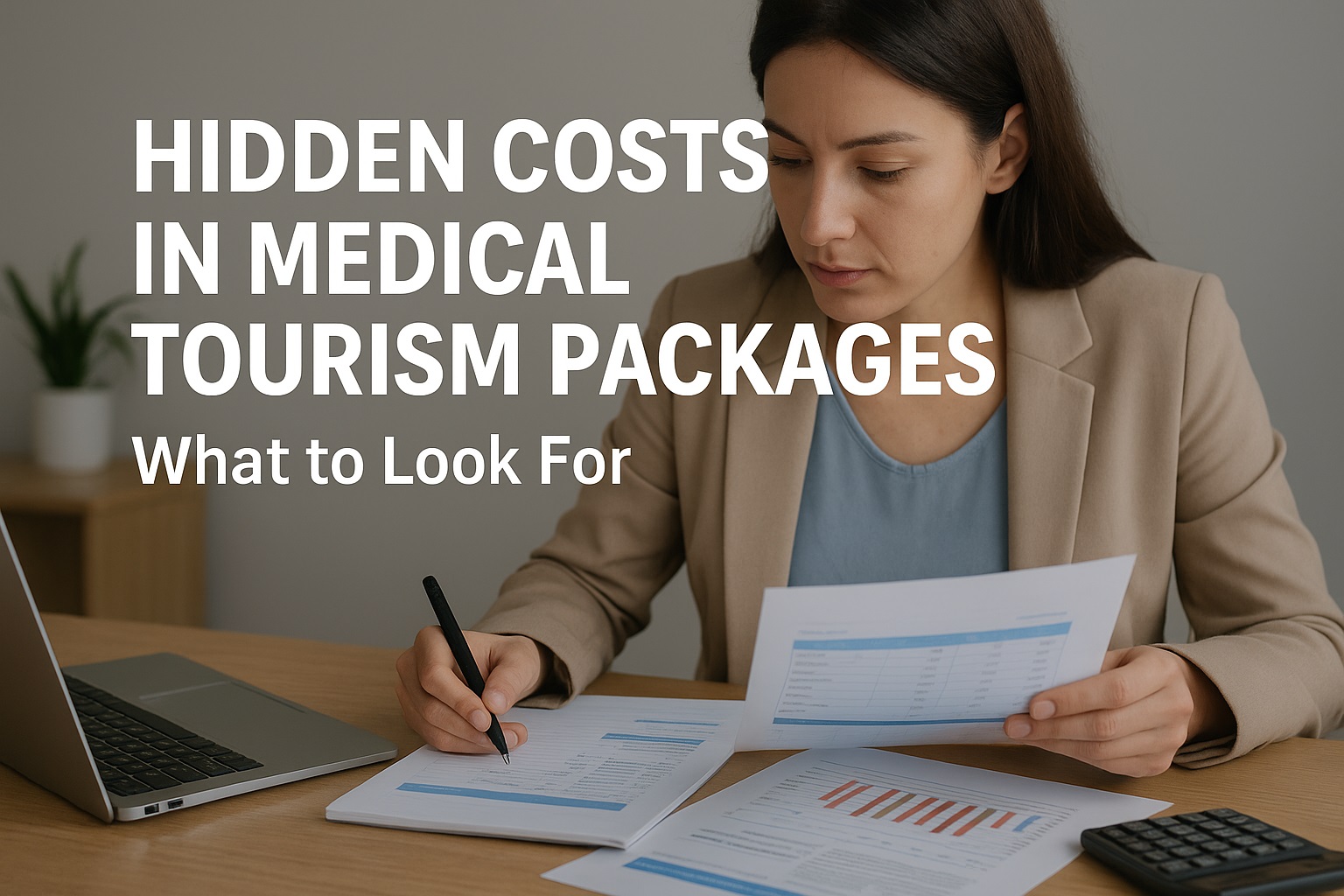Hidden Costs in Medical Tourism Packages: What to Expect and How to Avoid Them
Planning medical travel sounds exciting, but even well-priced packages can carry unforeseen expenses. In fact, hidden costs are more common than you might think. Accordingly, keeping yourself informed is key to getting the best value. This guide breaks down the main pitfalls—so you’re not surprised. For an overview of our services, visit our website.
1. Add-on Fees at the Destination
Even when the base price seems low, add-ons like airport transfers, tele-consultations, or expedited services can raise the final bill. So, you should always ask upfront for any fees that aren’t in the bundle. Many clinics list only the base cost, but you’ll pay extras for diagnostics, lab work, or even VIP check-ins. To avoid surprises, get a detailed breakdown before you commit. To see our various departments, you can check out our Departments Page.
2. Currency Exchanges and Hidden Charges
When paying abroad, currency conversion rates vary. Often, your bank or card adds fees—either a flat surcharge or a percentage. Consequently, that cheap surgery may cost much more once you’ve swapped USD to foreign currency. Use tools like XE Currency Converter or Wise for transparent rates. Additionally, inform your bank about your trip to avoid foreign-transaction blocks and fees.
3. Unforeseen Medical Expenses
Some complications arise during recovery, such as infections or follow-up visits. If these aren’t explicitly included, you might pay out of pocket. Likewise, aftercare coverage might end the day of the procedure. Therefore, clarify who handles complications and if follow-up is bundled—or whether you’ll fly home without support. A report from the National Library of Medicine highlights the financial burden of complications from medical tourism, with costs ranging from $26,000 to $154,000.
4. Travel and Accommodation Costs
Prices at destination hotels often fluctuate with demand. Furthermore, you might discover that your package covers only a specific type of lodging. If you upgrade or stay longer, the costs rise. A report by Grand View Research notes that the medical tourism market is projected to be worth over $87 billion by 2030, showing significant global interest in this field. Meanwhile, upgrades for suites, meals, or extra nights are typically extra. Hence, build in a buffer. You may want to try services like Booking.com or Airbnb for comparison and budget accordingly.
5. Legal and Administrative Fees
Some countries charge exit tax, handling fees, or visa renewals—especially if recovery runs long. In addition, administrative paperwork, medical record copies, or translation services usually cost extra. In fact, legal assistance for documentation might be required. To avoid surprises, consult your provider and embassy beforehand. For details on locations, you can visit our All Locations page.
6. Hidden Insurance and Liability Gaps
Many medical tourism packages exclude insurance for complications, travel delays, or repatriation. Therefore, standard policies may not cover out-of-network overseas treatments. In such cases, consider travel insurance with health coverage, like from the U.S. State Department travel tips or accredited insurers. According to a travel insurance comparison site, reputable providers like Tin Leg and Seven Corners offer robust medical and medical evacuation coverage.
Comparison: Package vs. Out-of-Pocket Extras
| Category | Typical Package Coverage | Possible Hidden Extra Cost |
|---|---|---|
| Transfers | Standard airport pick-up | VIP limo, helicopter, extra trips |
| Diagnostics | Basic pre-op tests | Advanced imaging, labs, follow-up |
| Stay | Shared room, limited days | Suite upgrades, extra nights |
| Insurance | None or minimal | Complication or evacuation coverage |
| Admin/Visa | Basic support | Document copies, extensions, translations |
7. How to Avoid Hidden Costs
Therefore, you should create a checklist before booking. Always request a line-item cost breakdown and read fine print carefully. Then, compare multiple providers—don’t rely on one quote alone. Furthermore, get customer testimonials or reviews from sites like Trustpilot or healthcare-travel forums for real-life insights. Finally, build a 10–20 % contingency in your budget for unexpected expenses.
8. Real-World Examples & Insights
For instance, one traveler reported an “extra $500 just for X-ray follow-up” unexpectedly. Another shared that, “the base price seemed great—but my stay extensions doubled my accommodation cost.” Such firsthand accounts emphasize the need for due diligence before booking. A survey by the Medical Tourism Association revealed that hidden costs and concerns about complications are the most significant factors that lead patients to opt out of medical tourism. Moreover, industry experts warn that low upfront prices are often offset by add-ons—and that transparency remains a key concern in medical tourism.
Conclusion
Medical tourism can offer fantastic savings and quality care—but only when you understand the full cost. For example, a hip replacement in some countries can cost as little as $7,000, compared to over $39,000 in the U.S. In short, ask questions, get detailed breakdowns, read fine print, and always plan for contingencies. Ultimately, informed travelers avoid surprises and enjoy both healing and savings abroad.




